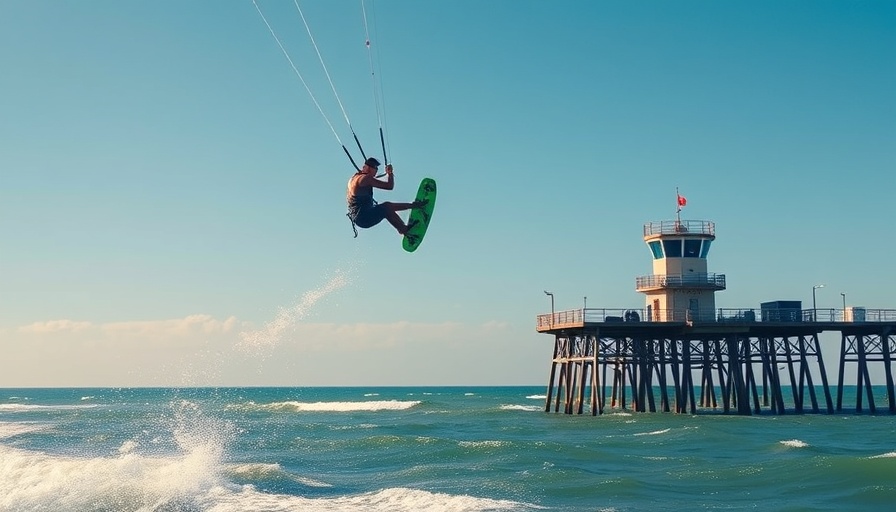
Understanding the Surge in Stingray Injuries
This summer, Seal Beach is seeing a significant rise in stingray injuries, a situation concerning both locals and visitors. Lifeguards report treating up to 15 stingray stings in just a single day. Conditions such as calm waters and low surf have led these creatures to come closer to shore, resulting in more encounters with beachgoers.
What This Increase Means for Local Beachgoers
As stingrays thrive in warmer shallow waters, particularly in the west end of Seal Beach, beach safety should be top of mind for all who frequent the area. The rise in stingray population—from around 30,000 observed this year—is linked to a combination of climate changes, improved water quality, and fewer predators like white sharks. These factors contribute to the increasing frequency of stingray encounters, particularly in areas known for their high density, such as 'ray bay' near the San Gabriel River.
Why Are Stingrays Dangerous?
Stingrays can be formidable when stepped on, using their barbed tails to defend themselves. Their camouflage often lures unsuspecting swimmers, leading to painful puncture wounds that can cause tissue damage and swelling. According to California State Parks, while most injuries happen during the warm afternoons, it’s vital that all beachgoers remain vigilant.
Simple Steps to Avoid Stingray Stings
Beach safety is key during this uptick in stingray populations. Here are some practical tips to help you avoid stepping on a stingray:
- Shuffle Your Feet: Instead of walking normally, shuffle your feet when walking through shallow waters. This technique helps send vibrations in the water, warning stingrays to swim away.
- Avoid Shallow Waters: If possible, stick to deeper areas where stingrays are less likely to be resting.
- Be Careful When Swimming: Swim in areas with lifeguard supervision and pay attention to any warnings about stingray activity.
What to Do If You Get Stung
If you do get stung, the first step is to remain as calm as possible. The pain can be intense, but seeking immediate medical attention is crucial. Here are basic first aid steps:
- Rinse the Wound: Carefully rinse the area with water to clean out any debris.
- Immerse in Hot Water: Submerging the sting site in hot water for about 30 to 90 minutes can help alleviate pain.
- Take Pain Relief: Over-the-counter pain relievers can help mitigate discomfort.
Engaging with Our Community
As we adapt to these changes in our local ocean ecosystem, it’s important to share knowledge and experiences. Have you ever encountered a stingray? How did you handle it? Engaging with others about their experiences can foster community awareness and preparedness. Ensuring a safe beach experience requires cooperation and shared insights.
The Future of Beach Safety in Seal Beach
As we head into peak beach season, it is crucial to stay educated and proactive. Local health officials and lifeguards continue to monitor the situation and will provide regular updates on stingray populations and safety measures. Embracing a cautious approach and following beach safety guidelines will not only protect you but enhance your overall ocean experience.
Take Action for a Safer Beach Visit
With summer in full swing, make sure to stay informed and encourage friends and family to practice stingray safety. Whether you’re a seasoned beachgoer or a first-time visitor, understanding the local marine environment helps everyone enjoy safer moments at the water’s edge.
 Add Row
Add Row  Add
Add 



Write A Comment